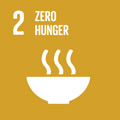- Docente: Dario Braga
- Credits: 6
- SSD: CHIM/03
- Language: English
- Teaching Mode: Blended Learning
- Campus: Bologna
- Corso: Second cycle degree programme (LM) in Photochemistry and Molecular Materials (cod. 9074)
-
from Sep 18, 2024 to Dec 20, 2024
Learning outcomes
At the end of the course the student has acquired knowledge to design, prepare and characterize crystalline molecular materials and coordination networks and to study crystal polymorphs and co-crystals.
Course contents
Contenuti
1. Introduction. Hystorical background. When crystal engineering was born. Tutorials on most relevant techniques for the investigation of the solid state (IR and RAMAN spectroscopies, solid state NMR, X-ray diffraction, differential scanning calorimetry, TGA)
2. Intermolecular interactions in molecular crystals, amorphous substances, hydrogen bonds, halogen bonds, sigma-hole interactions, coordination bonds to construct superstructures.
3. Crystal forms. Multeplicity of crystal forms for a same substance, crystal polymorphism, hydrates, solvates, salts, co-crystals and their polymorphs
4. Crystal Polymorphism. The issue of identification, characterization, usage of crystal forms. The impact in the pharmaceutical field. Aspects related to intellectual property issues. Enantiotropic and monotropic polymorphism. Case studies.
5. Crystallization. Main techniques. From solution, from melt, The kinetic problem and the quest for the most thermodynamically stable form.
6. Solvates and hydrates. Dynamic vapour sorption. Solubility and stability of hydrates. The formation of solvates and hydrates via crystallization. Solvent removal and interconversion. Thermodynamic and calorimetric aspects. Case studies.The case of rifaximin.
7. Co-crystals. Preparation of multicomponent molecular crystals, the problem of acid-base crystals, proton transfer. mechanochemical prep. Aspects related to IP issues and patentability. The ionic co-crystals. Case studies.
8. Chirality. Chiral crystals, relationship between chirality at the molecular level and at crystal level. Racemic mixtures, racemic conglomerates, racemates. The importance of chiral resolution. Case studies.9. Metal Organic Frameworks. Hystorical background: the relationship between coordination chemistry and coordination networks: spacers and knots. Case studies. The properties of MOF. Their industrial utilization: gas storage, catalysis in nanocavities, molecular sieves. Adsorption and desadsorption of molecules in/from MOF.
10. HOFs. Organic hydrogen bonded networks. Preparation and applications as porous materials.
Lab experiences (attendance NOT compulsory) on
i) polymorphic transitions (DSC, Xray powder diffraction)
ii) dehydration of hydrates (TGA, DSC, Xray diffration)
iii) co-crystal design and preparation (database analysis, crystallization, characterization)
iv) coordination polymer / MOF preparation (characterization)
Readings/Bibliography
Crystal Engineering. Lectures notes by Fabrizia Grepioni and Dario Braga. Available on line from UniBo web site
Crystal Engineering. A textbook. Gautam Desiraju, Jagadese Vittal, Arunachalam Ramanan. World Scientific Publishing
power point presentations provided by the teacher.
Teaching methods
lectures deliverd by prof. Braga and seminars provided by visiting guest professors of the course on specific topic
Lab experiments and instrumentations. Attendance to the lab is not compulsory.
Assessment methods
The student can always choose between a written or an oral examinational. If the student has attended the lab, the written report report on the practical lab experiences is also evaluated.
Teaching tools
power point presentations and videos from the web
Links to further information
https://site.unibo.it/molecular-crystal-engineering/en
Office hours
See the website of Dario Braga
SDGs




This teaching activity contributes to the achievement of the Sustainable Development Goals of the UN 2030 Agenda.
